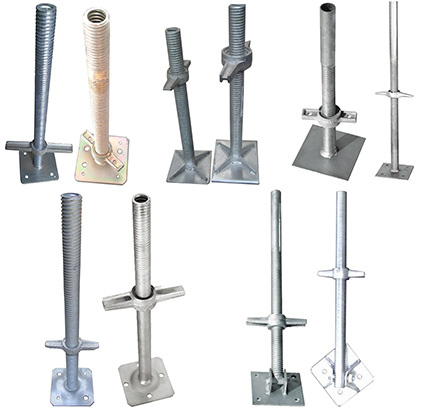
A base jack is a piece of equipment that is typically used to adjust the height of scaffolding structures on uneven surfaces. The traditional base jack includes a threaded rod that is connected to a base plate. This threaded rod can be adjusted up or down depending on the height requirements of the scaffolding structure. However, traditional base jacks present some challenges that can make the construction process more complicated than necessary.
One particular challenge with traditional base jacks is the time and effort required to adjust the height of the scaffolding structure. Adjustments require physical labor and can result in downtime for construction activities. This can be particularly challenging when construction projects involve numerous height adjustments.
Another challenge with traditional base jacks is the uneven weight distribution that they often create. This can be hazardous for workers on the scaffolding structure, as it can lead to an unstable base that can result in accidents and injuries.
Fortunately, recent innovative solutions for base jacks have emerged, addressing these challenges and making the construction process easier and more efficient. These solutions include:
1. Self-Leveling Base Jacks: Self-leveling base jacks have an internal mechanism that automatically adjusts the height of the base jack to create a level surface for the scaffolding structure. This eliminates the need for manual height adjustments, saving time and effort, and eliminating downtime for workers.
2. Adjustable Base Jacks: Adjustable base jacks have a unique design that allows for quick height adjustments. These base jacks are designed with an external mechanism that can be easily adjusted to change the height of the scaffolding structure. This eliminates the need for physical labor, reducing the risk of downtime for construction activities.
3. Weight-Balancing Base Jacks: Weight-balancing base jacks are designed with an innovative weight-balancing mechanism that distributes the weight of the scaffolding structure evenly. This eliminates the uneven weight distribution that is often seen with traditional base jacks, reducing the risk of accidents and injuries for workers on the scaffolding structure.
In conclusion, the construction industry is benefitting significantly from the innovative solutions for base jacks, making the construction process easier and more efficient. These solutions are addressing some of the significant challenges associated with traditional base jacks, including the need for manual height adjustments, physical labor, and uneven weight distribution. These innovative solutions are transforming the construction industry, making it safer and more productive for workers nationwide.
